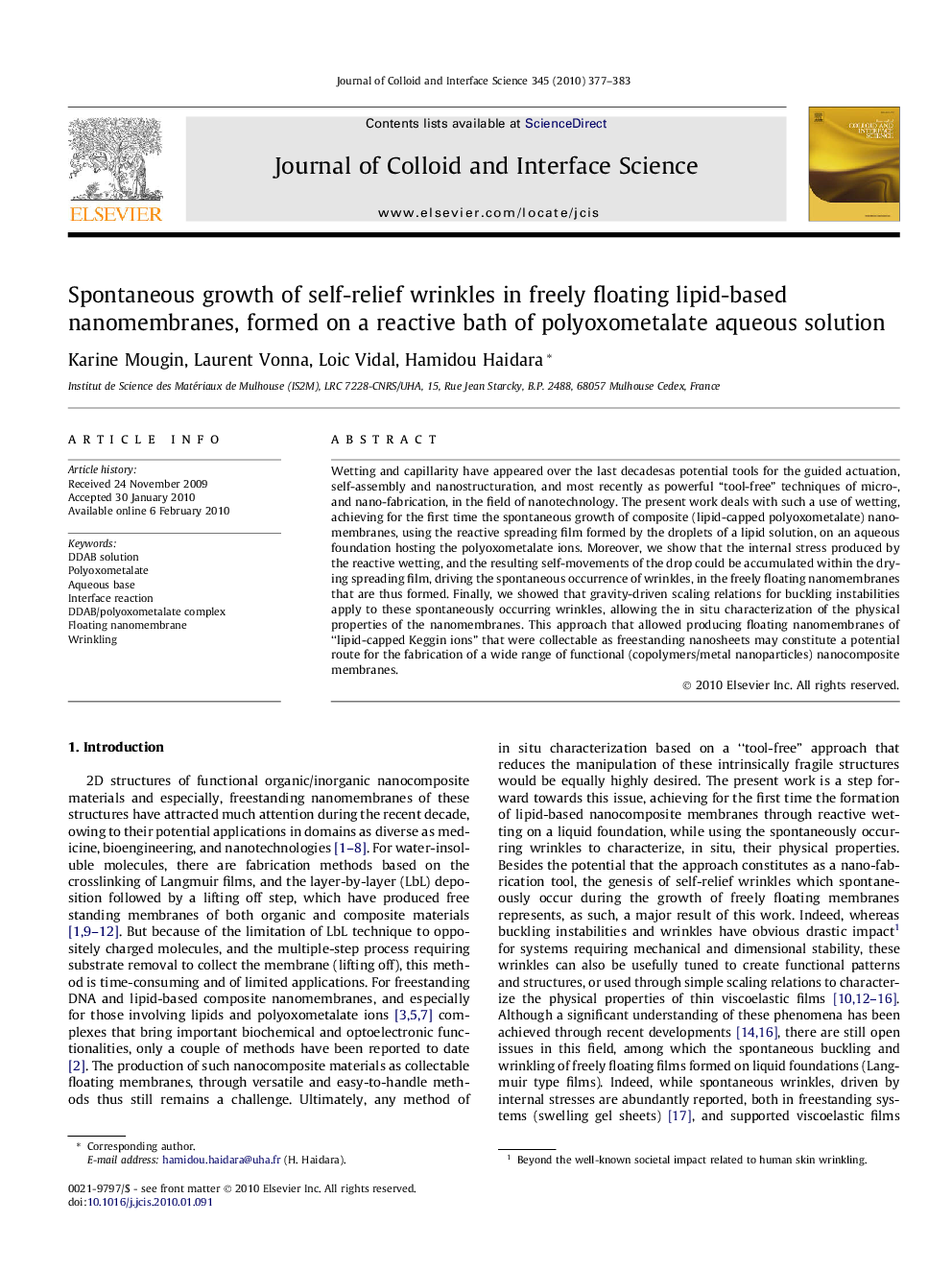| Article ID | Journal | Published Year | Pages | File Type |
|---|---|---|---|---|
| 609886 | Journal of Colloid and Interface Science | 2010 | 7 Pages |
Wetting and capillarity have appeared over the last decadesas potential tools for the guided actuation, self-assembly and nanostructuration, and most recently as powerful “tool-free” techniques of micro-, and nano-fabrication, in the field of nanotechnology. The present work deals with such a use of wetting, achieving for the first time the spontaneous growth of composite (lipid-capped polyoxometalate) nanomembranes, using the reactive spreading film formed by the droplets of a lipid solution, on an aqueous foundation hosting the polyoxometalate ions. Moreover, we show that the internal stress produced by the reactive wetting, and the resulting self-movements of the drop could be accumulated within the drying spreading film, driving the spontaneous occurrence of wrinkles, in the freely floating nanomembranes that are thus formed. Finally, we showed that gravity-driven scaling relations for buckling instabilities apply to these spontaneously occurring wrinkles, allowing the in situ characterization of the physical properties of the nanomembranes. This approach that allowed producing floating nanomembranes of “lipid-capped Keggin ions” that were collectable as freestanding nanosheets may constitute a potential route for the fabrication of a wide range of functional (copolymers/metal nanoparticles) nanocomposite membranes.
Graphical abstractFreely-floating (lipid DDAB/polyoxometalate) nanomembranes produced by reactive wetting on aqueous foundations: a) plain membrane, b) spontaneously occurring relief wrinkles, shown here close to a residual dried droplet.Figure optionsDownload full-size imageDownload high-quality image (59 K)Download as PowerPoint slide
